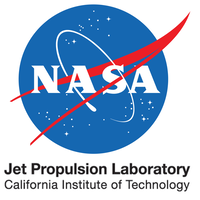Part 9 of 12 Parts
Sixteen research projects drawn from NASA, the space industry and academia will receive grants from the NASA Innovative Advanced Concepts (NIAC) program in order to study the feasibility of their concepts. Here are more of the projects:
13. SWIM -- Sensing with Independent Micro-swimmers
Ethan Schaler
NASA Jet Propulsion Laboratory
During the next decades of deep space exploration, there will be a focus on the so-called Ocean Worlds. These include Enceladus, Europa, and Titan which are believed to have liquid water oceans beneath miles of icy crust. These worlds are some of the most probable locations beyond our Earth that may harbor complex aquatic lifeforms beneath their icy crusts. In order to reach these aquatic environments, NASA is developing numerous ocean-access mission concepts.
One example is the Scientific Exploration Subsurface Access Mechanism for Europa (SESAME) class of thermo-mechanical drilling robots. SESAME supports the formulation and maturation of system concepts and the associated technologies capable of accessing liquid water by penetrating the surface ice of one of the Ocean Worlds.
1) Identify ice penetration systems capable of facilitating the detection of evidence of life by providing access to liquid water located 100s of meters to 10s of kilometers below the surface of the ice.
2) Identify the technology component(s) representing the greatest technical risk to the overall penetration system.
3) Reduce the identified key component technology risks through the proposed development effort.
4) Develop prototype hardware and assess the hardware performance via analysis and complementary experiments.
The NASA – JPL team proposes the development of Sensing with Independent Micro-swimmers (SWIM) which will dramatically expand the capabilities of SESAME-class ocean access robotic missions and significantly increase the probability of their detection of habitability, biomarkers and life.
The SWIM system consists of 3D-printed swimming micro-robots (micro-swimmers) equipped with MEMS sensors, propelled by miniature actuators, and wirelessly controlled with ultrasound waves. The micro-swimmers can be deployed either individually or in swarms from a single SESAME robot mothercraft. The mothercraft has limited mobility once it has anchored itself to the ocean-ice interface.
SWIM allows active sampling of ocean water beyond the reach of the mothercraft. This increases the chance of detecting biomarkers. The micro-swimmers also allow the measurement of desired temporally-and-spatially-distributed ocean properties, habitability metrics and potential biomarkers. (These cannot be accomplished with a single robot.) This combination of capabilities will allow scientists to make better characterizations and understand the alien ocean’s composition and habitability on NASA’s first ocean-access mission.
In Phase 1, the NASA-JPL team will establish the fundamental feasibility of operating SWIM robots wirelessly at multiple-yard distances from a robotic mothercraft through two major tasks:
1) They will build a Science Traceability Matrix focused on science goals for a NASA SESAME-class robotic mission at the ocean-ice interface.
2) They will perform a Micro-Swimmer Design Trade Study to determine the appropriate robot designs/sizes to use available science instruments at the intended exploration ranges and under the expected sub-surface ocean conditions. The study will focus on four key miniaturized subsystems including scientific instruments (MEMS sensors, spectrometers, and cameras), actuators (ultrasound, piezo-electric, motors), communications (ultrasound) and power (batteries, energy harvesters.
